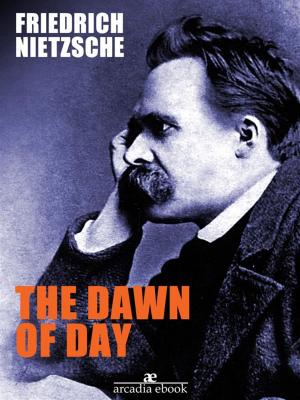Creative Theory, Radical Example: Criticisms and Essays for Culture in the Digital Paradigm
Nonfiction, Science & Nature, Science, Religion & Spirituality, Philosophy| Author: | Justice Koolhaas | ISBN: | 9781310179884 |
| Publisher: | Justice Koolhaas | Publication: | April 6, 2015 |
| Imprint: | Smashwords Edition | Language: | English |
| Author: | Justice Koolhaas |
| ISBN: | 9781310179884 |
| Publisher: | Justice Koolhaas |
| Publication: | April 6, 2015 |
| Imprint: | Smashwords Edition |
| Language: | English |
Koolhaas’s Creative Theory, Radical Example offers a dizzying and breakneck tour (de force) through digital identity, ethical shopping, self-publishing, transhumanism, blue-chip art celebrities, and the shifting relationships between the media and the ‘masses’. Its span of theorists, novelists and artists includes Friedrich Nietzsche, Martin Heidegger, Julia Kristeva, Slavoj Žižek, Karl Marx, Franz Kafka, Michel de Certeau, Jean-François Lyotard, Jacques Derrida, Guy Debord, Maurice Blanchot, Donna Haraway, Jenny Holzer, G.W.F. Hegel, and Hélène Cixous.
The book is comprised of two introductions by the translator, six essays, and excerpts from an unfinished novel. The first introduction outlines Koolhaas’s technological foci, her regrounding methodology and poetics, the need for Theory Celebrities, a politics of infolution, her architecture for university reform, and the intransigent refusenikism that arguably contributed to her obscurity. The second introduction is a chapter-by-chapter commentary that guides the student through Koolhaas’s essays and literature:
‘Cybernetics: Nietzsche and Heidegger’
‘Studying Media: Baudrillard and Science Fiction’
‘Literature: Deleuze & Guattari, Kafka, and Joyce’
‘What’s So Wrong About Rant?’
‘Žižek and the Sex Between Emin and Hirst’
‘Methodological Considerations’
‘Nouveau Roman Excerpts: Caliphornia’
The Textual Connexivities chapter lists the works cited.
C. M. Cohen’s comprehensive interpretations mean that the uninitiated Koolhaas student can pick and mix material from this book to suit their purposes without feeling pressured to grasp everything at once.
Koolhaas’s Creative Theory, Radical Example offers a dizzying and breakneck tour (de force) through digital identity, ethical shopping, self-publishing, transhumanism, blue-chip art celebrities, and the shifting relationships between the media and the ‘masses’. Its span of theorists, novelists and artists includes Friedrich Nietzsche, Martin Heidegger, Julia Kristeva, Slavoj Žižek, Karl Marx, Franz Kafka, Michel de Certeau, Jean-François Lyotard, Jacques Derrida, Guy Debord, Maurice Blanchot, Donna Haraway, Jenny Holzer, G.W.F. Hegel, and Hélène Cixous.
The book is comprised of two introductions by the translator, six essays, and excerpts from an unfinished novel. The first introduction outlines Koolhaas’s technological foci, her regrounding methodology and poetics, the need for Theory Celebrities, a politics of infolution, her architecture for university reform, and the intransigent refusenikism that arguably contributed to her obscurity. The second introduction is a chapter-by-chapter commentary that guides the student through Koolhaas’s essays and literature:
‘Cybernetics: Nietzsche and Heidegger’
‘Studying Media: Baudrillard and Science Fiction’
‘Literature: Deleuze & Guattari, Kafka, and Joyce’
‘What’s So Wrong About Rant?’
‘Žižek and the Sex Between Emin and Hirst’
‘Methodological Considerations’
‘Nouveau Roman Excerpts: Caliphornia’
The Textual Connexivities chapter lists the works cited.
C. M. Cohen’s comprehensive interpretations mean that the uninitiated Koolhaas student can pick and mix material from this book to suit their purposes without feeling pressured to grasp everything at once.















